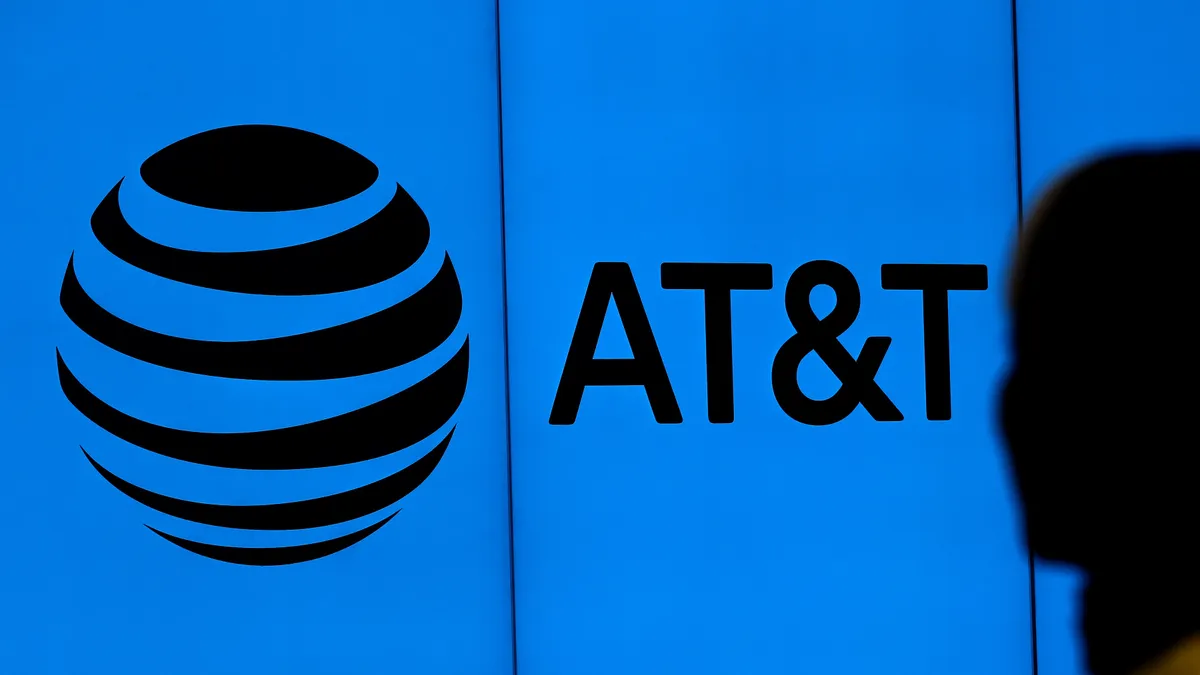The importance of the social component — the “S” — in ESG has increased in recent years, climbing in relevance against the backdrop of a pandemic that has put employees and their needs front and center. COVID-19 exposed vulnerabilities in value chains, revealed the depth of corporate values and prompted coordination and collaboration across businesses in industries.
As a result, evidence is emerging that indicates investors are leaning toward products that favor companies with a positive societal impact, according to research from Standard and Poor’s.
While companies wait for the Securities and Exchange Commission’s final rule on climate-related disclosures, many are already gearing up to best prepare for how this will impact their operations. Though all eyes may be on sustainable reporting at the moment, businesses will also have to start adapting to upcoming workforce disclosure regulations in states like California, which recently passed Senate Bill 54, pushing for more diversity-related disclosures from investment firms.
Separate from mounting regulatory pressure for more transparency, there is also greater demand for ESG ratings from investors. Publicly listed companies are spending between $220,000 and $480,000 annually to obtain ESG ratings, whereas their private counterparts are spending up to $425,000, often from third-party agencies, according to sustainability consulting firm Environmental Resources Management. Companies rely on a wide range of rating agencies — such as Sustainalytics, Refinitiv, MSCI, among others — to conduct assessments of how well they incorporate ESG factors into their frameworks.
However, these results are difficult to streamline and compare as the data companies collect for their social practices varies firm to firm and industry to industry. Accessing this data also has its own set of challenges due to different data privacy laws across the U.S.
What does ‘S’ mean to different companies?
Most companies define the “S” in ESG as social responsibility and issues linked to its business operations, from employee health and safety to diversity and inclusion, or the effects of its supply chain and distribution to human rights. While environmental and governance factors are concerned with a corporation’s effects on the planet or on its internal and political functions, social factors are primarily those that will “arise in the relations between a company and people or institutions outside of it,” according to research from S&P.
However, social issues have historically fallen behind environmental and governance factors for some time — a lag PwC attributes to the fact that “E” and “G” are more clearly defined versus “S.”
“The million-dollar question is: What should firms be talking about when they talk about their social impact?” said Ethan Rouen, a Harvard professor whose research focuses on inequality and the impact and value of human capital. “What matters to employees and what makes a good employer will vary across firms and across industries and across time.”
Rouen said what social data leaders choose to share is subjective, noting that while interviewing a dozen executives involved in company disclosure decisions for his research, most said they “use disclosures to tell their human capital story” and “would never disclose anything that makes them look bad.” He said factors such as compensation data and turnover information, for example, are often left out.
The picture presented in corporate ESG reports then is often incomplete and lacking information that points to where the real risks may lie.
“The million-dollar question is: What should firms be talking about when they talk about their social impact? What matters to employees and what makes a good employer will vary across firms and across industries and across time.”

Ethan Rouen
Professor at Harvard Business School
Rouen noted, however, streamlining the social data measured and the metrics assessed is not always the solution when it comes to “S” as it could be accounted for differently depending on the company and industry.
In a 2022 study from PwC dissecting the importance of “S” in a company framework, the consulting firm advised clients to first identify what social elements best align with their respective business values and purpose before curating a social strategy. The firm noted these priorities would be “different for each firm and informed by their purpose, strategy and sustainability targets and commitments.”
Retail giant Walmart categorized its social data across four themes in its 2023 corporate ESG report, including “opportunity,” “ethics and integrity,” “community” and even “sustainability,” showing how scattered social information is often organized. Walmart reported metrics on a wide range of issues, including human capital and equity and inclusion, as well as human rights issues, charities, contributions in local economies, and the well-being of people working in product supply chains.
On the other hand, investment banking firm Morgan Stanley split social into two brackets in its 2022 ESG report: “people and culture,” which focused on benefits and wellbeing and compensation practices, and “diversity and inclusion,” which focused on DEI efforts across its workforce and society.
“I very much support the metrics being proposed by the SEC right now,” Rouen said, referring to the regulatory agency’s recent update to its workforce disclosure rule, which would require companies to disclose comprehensive labor data such as compensation ranges and employment status. However, he said such rules were “definitely not a panacea” and he was sympathetic to the challenges companies and regulators face on this issue.
“If a tech company is reporting information about health and safety, I don’t care about that. I care about their diversity,” he said. “But if a mining company isn’t talking about their health and safety, I’d be really concerned.”
Data collection is inconsistent and hard to gather
The social element of ESG issues can be the most difficult for investors to assess, according to the United Nations Principles for Responsible Investing. The organization attributes this to a lack of an established track record of market data and robust regulation concerning “S,” making it “less tangible” and with “less mature data to show how [it] can impact a company's performance.”
PRI assessed feedback from multiple asset managers and research firms, including Allianz SE, Morgan Stanley, ClearBridge Investments, and research and ESG ratings firm MSCI, among others.
What social factors a business should measure is a complex question, but how to access the data is equally daunting, made even more difficult due to the varying data privacy and security laws across the U.S.
“Depending on what you disclose for the ‘S,’ you have to pay attention to data privacy laws and the source of the information if it’s third-party data,” said Elodie Timmermans, managing director at Ernst & Young.
Timmermans, who specializes in climate change and sustainability services, said the discrepancy in data privacy laws across states also creates an obstacle. While some states — such as New York, California, Colorado and Washington, among others — have implemented pay transparency laws, most states have not, hampering efforts to collect companywide data on hiring, pay and diversity. She noted this is a reason why pay equity and compensation do not show up on most company sustainability reports.
Though the U.S. has passed legislation protecting children’s information online, medical and educational records, there is no overarching law that covers the privacy of all types of data. These disparate regulations can make it harder for employers to acquire certain employee information demographics as it qualifies as protected data.
“While climate-related data is certainly reported inconsistently in different markets, it isn't protected the same way that diversity-related data is,” said Alyssa Stankiewicz, Morningstar’s associate director of sustainability research.
Additionally, handling diversity data, when and if available, is a delicate matter. Companies must ensure they are only engaged in gender-conscious or race-conscious hiring practices if they “find evidence of company-wide or industry-wide hiring discrimination” and undergo this route to “correct the initial imbalance,” according to a report by the Harvard Business Review. Racial data should not determine and influence hiring decisions otherwise, under laws enforced by the U.S. Equal Employment Opportunity Commission.
The social component of ESG is also difficult to collect because it’s a predominantly qualitative metric that needs to be accounted for in a quantitative way to generate a holistic score. While some social initiatives — such as the auditing of vendors and suppliers for fair pay — can be quantified, most components cannot, according to sustainable consulting and data management firm ADEC Innovations. Many organizations find it challenging to quantify or assign monetary value to services or benefits such as mental health support for employees or efforts in building an inclusive environment, per ADEC.
“It’s really hard to define what we mean by good treatment of employees,” Rouen noted. “And it’s really hard to create a set of rules that would apply to every company.”
Where to from here?
Despite obstacles in defining and measuring “S,” regulatory action regarding social disclosures has gained momentum within the U.S.
The SEC’s Investor Advisory Committee proposed a new rule to the agency in September that would require publicly traded companies to disclose more robust data regarding their workforce and human capital management, including compensation ranges, employment status and workforce demographics.
Shortly after, California Gov. Gavin Newsom signed SB 54 into law in October, which requires venture capital firms headquartered or operating significantly in the Golden State to annually report the number of diverse founders they invest in and disclose data about their race, sexual orientation, gender identity, disability and veteran status, in addition to the dollar amount given to them.
Overall, Timmermans thinks there has been progress regarding how social data is collected and disclosed on a company’s environmental and social activities due to the coalescence of several reporting frameworks.
Recently, multiple reporting frameworks have begun to coalesce under the International Financial Reporting Standards Foundation’s International Sustainability Standards Board, which was created in 2021. ISSB has consolidated the work of four reporting bodies so far: the U.S.-based Value Reporting Foundation’s Sustainability Accounting Standards Board, the Task Force for Climate Related Disclosures, the Climate Disclosure Standards Board and the International Integrated Reporting Framework.
“We’re trying to do a lot in a short amount of time, from an ESG disclosure perspective. We’re trying to accomplish within three years what the financial world did in 100 years.”

Elodie Timmermans
Managing Director at EY
“I do believe the convergence of reporting frameworks will help, whether that’s CSRD or ISSB,” she said. “What is material to one company [regarding ‘S’] will be different than another, so there will be nuances and everyone won’t disclose the same thing, but that convergence will help.”
ISSB was also urged to prioritize human and workers’ rights as part of its next agenda by a multinational coalition of investors in August.
However, Timmermans noted the convergence of reporting standards will take time and streamlining ESG disclosure practices across different companies and industries — especially regarding “S” — will be gradual and cannot be expedited.
“We’re trying to do a lot in a short amount of time, from an ESG disclosure perspective,” Timmermans said. “We’re trying to accomplish within three years what the financial world did in 100 years.”


















